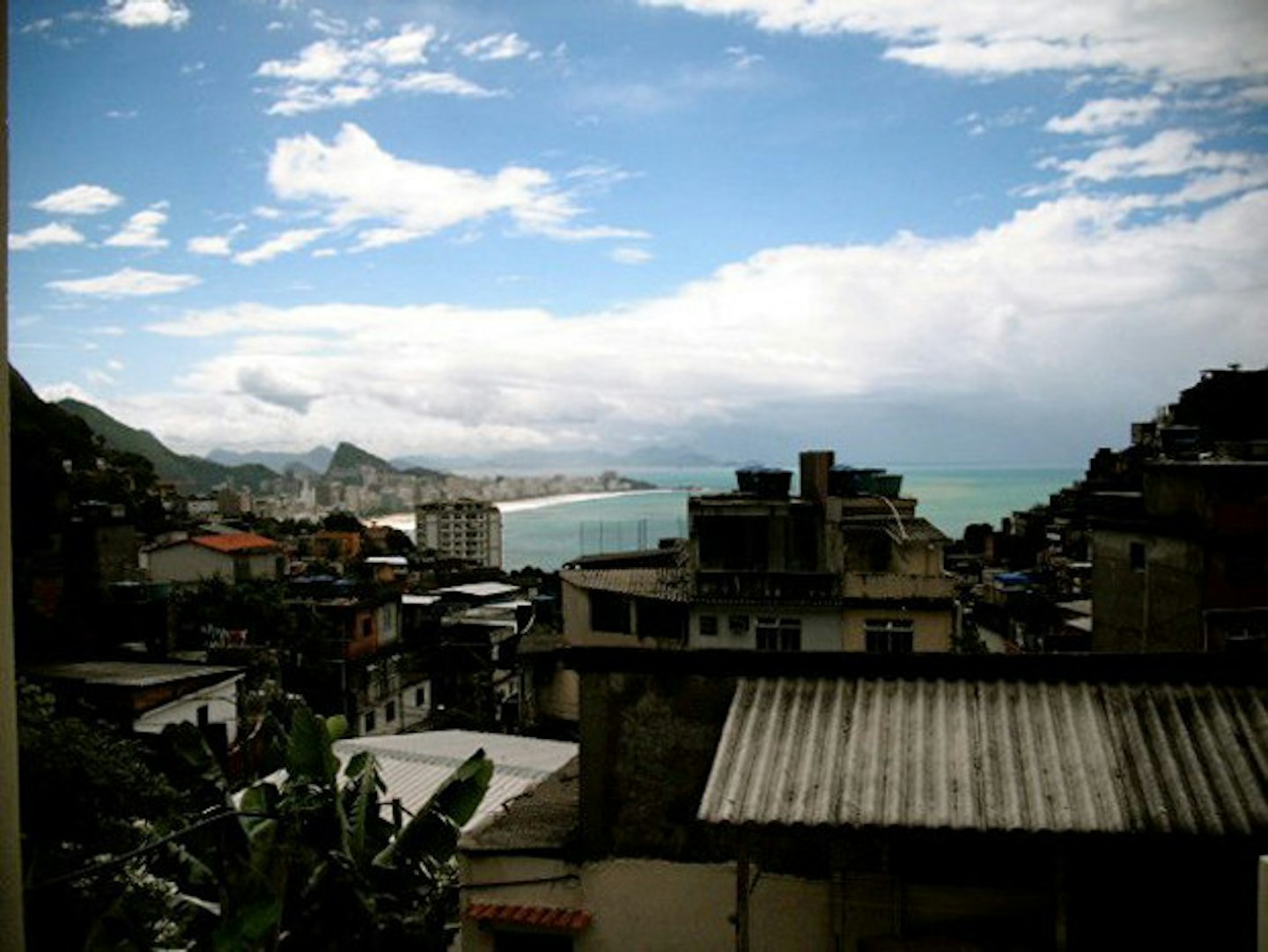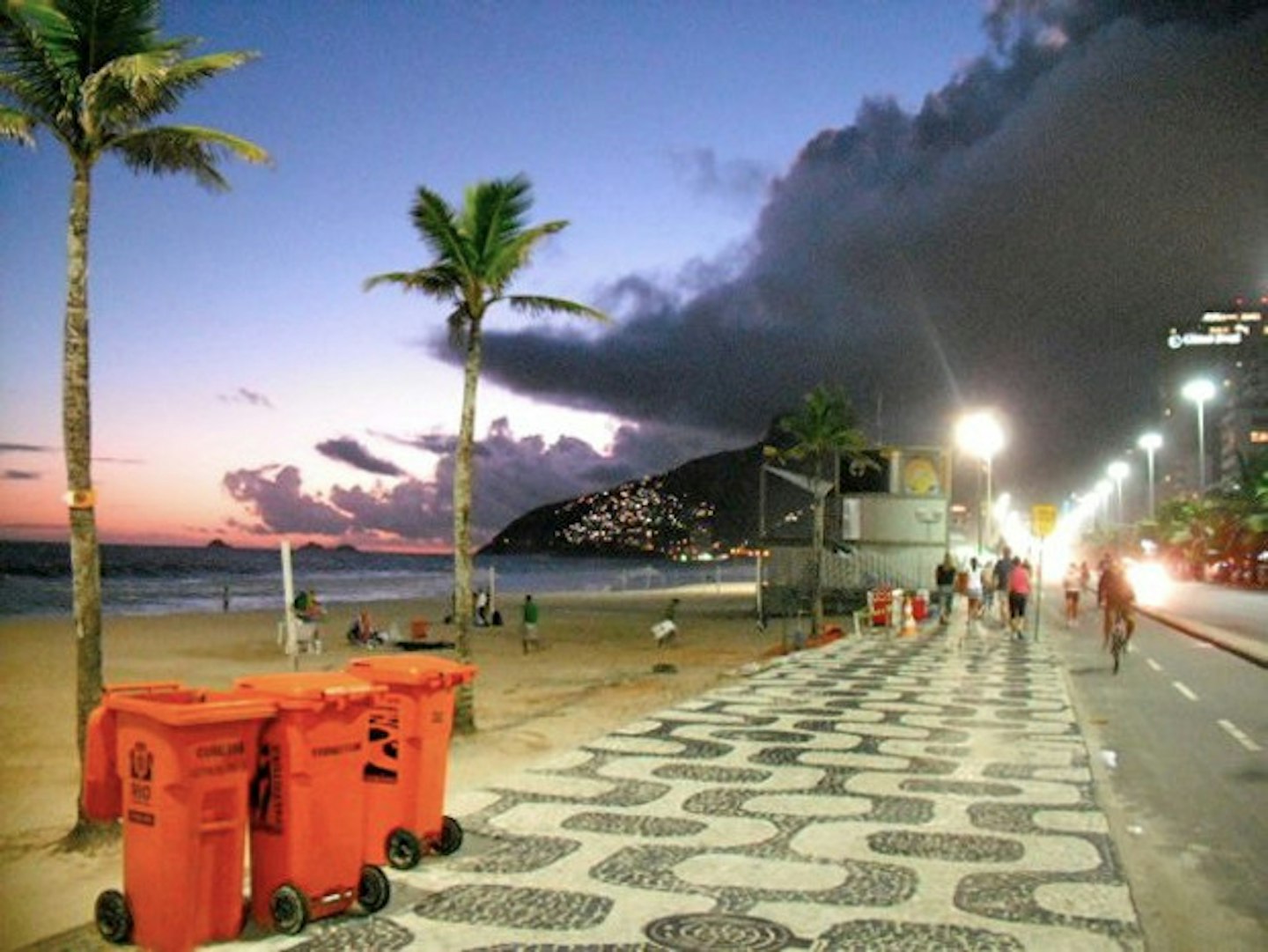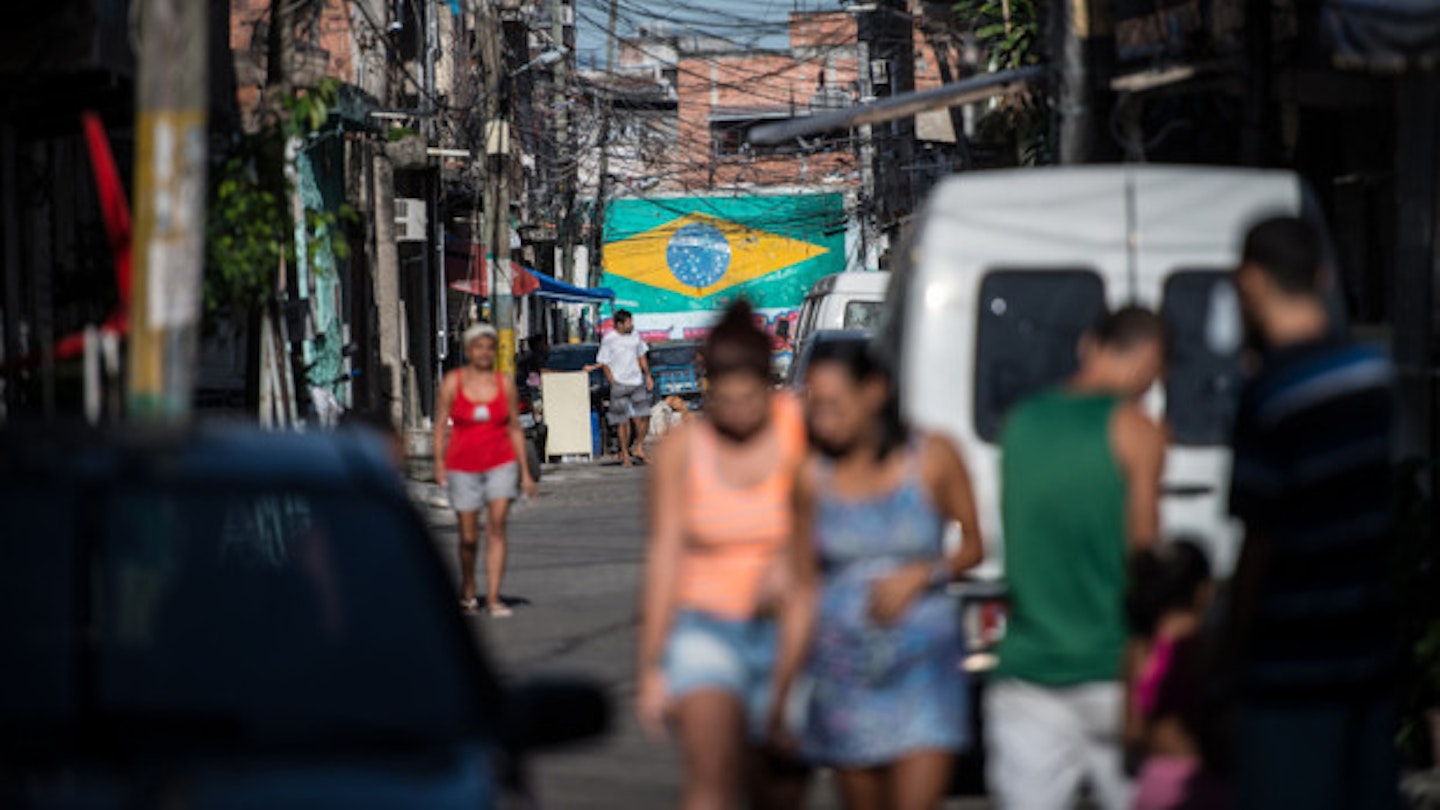The world’s media and Coleen Rooneyhave swarmed to Brazil for this summer’s World Cup, expecting a party atmosphere from the vibrant country famous for football fever. Instead they’ve found a muted atmosphere, one punctuated by protests at how much hosting the tournament and the 2016 Olympic Games is costing a country that is, in parts, already crippled by poverty. They cite the favelas or ‘slums’ of Rio de Janeiro, where the average wage of a resident is £106, even though the minimum wage is £194 a month. On average, favela residents receive 3.5 fewer years of schooling, and teenage pregnancy rates are five times higher than those living outside.
But while it’s true that there should be serious questions about the living standards faced by many Brazilians, the truth of the favelas is more complicated than that. I should know because in 2009 I found myself living in one.
My friend, Flori, and I had gone to Rio during our third year abroad from Leeds University ostensibly to study Portuguese. I was 22 and teaching English to very rich Brazilian children, and Flori was 21 working at Blue Agave, a Mexican bar near the beachfront, which was popular with foreign tourists (gringos).
Initially we lived in a very odd set up in a kitsch penthouse apartment, run by an older Brazilian woman, in the stunning but seedy Copacabana. But the flat was costing us near London prices – unsurprisingly for one of the world’s largest economies, Rio’s rents had been soaring. So we were forced to move to the one place we could still afford on our student loans and low-paying jobs: The Vidigal favela.

My mum was a little apprehensive at the idea to begin with but, after discussing it, we came to the conclusion that it was no different to living on a council estate in the UK – ie, totally acceptable. The reality, though, was very different.
Perched on the edge of the Morro dos Irmãos, Vidigal sits between the much smaller neighbouring Chácara do Céu favela and the emblematic Rocinha favela, considered Rio de Janeiro’s largest, which sprawls, juxta-posed between the affluent areas of São Conrado and Gávea. By night the Vidigal neighbourhood can be seen twinkling prettily on the Atlantic coast and it boasts one of the most breath-taking views of the iconic Ipanema and Copacabana beaches.
But, ruled by the Amigos dos Amigos (ADA) drug cartel, life there wasn’t as tranquil as the views would suggest. The first thing we had to get used to were the fire-crackers. We had to learn to distinguish between the signal that the police or a rival gang were entering the Morro, and the celebratory fireworks which were let off when local football team won a match. Our much savvier local neighbours were endlessly amused by us confusing the two, but the language of the favelas isn’t necessarily easy to learn for an outsider.
Guns were everywhere and, at the weekend, Baile Funk parties were the places for the drug traffickers, known locally as bandidos, to show off rank, as well as the latest raunchy dance moves. Proudly carrying their AK-47s, many were very young, sometimes as young as 12 or 13, and as high on cocaine as the kites they flew.

But while Favelas are often portrayed in the media as overrun with drug addicts and prostitutes, aside from the bandidos, most of the people living in the favela worked hard and kept well away from drugs. It was usually gringo tourists and rich students from the nearby private schools who would visit the favela to get their fixes. So we quickly adapted to day-to-day life there. Everyone was friendly and no one once questioned our presence there.
The overarching sense of community in Vidigal was compelling and, at times, it was easy to forget the brutality behind the hierarchical drug lord set-up because of what it appeared to give back to a community otherwise deprived of basic public services, such as transport to work. The bandidos organised mini vans that shuttled students and workers from the favelas across the city, as well as moto-taxis, which provided the easiest way of climbing the narrow, winding alleys of the hills.
Ironically, we felt safer in Vidigal than in the tourist-heavy areas of the city, where we felt more vulnerable to muggings. Unspoken rules designed to keep police out as much as to keep order kept crime levels low. Doors were left unlocked because people did not steal. If someone committed a crime, he or she would have to leave the community for their own safety, with or without their family. We heard stories of some being subjected to torture in punishment, or worse death. Even children were made examples of – something that has contributed over time to the large number of children living on Rio’s streets.
Every so often, though, something would remind you of the harsh reality of a world where there were no safety nets, whether it was neighbours with serious injuries gone untreated or signs of maimings endured in revenge attacks from rival gangs. It wasn't just violence between gangs and police we had to fear, but attempts by competing gangs to seize control of the favela.

Toward the end of our time in Vidigal the following summer, when we were coming to the end of our courses and preparing to return to the normality of Leeds for final year, the mood changed slightly as tension mounted in anticipation of the inevitable warfare between the police and the gangs. There was an increasing presence of snipers on guard at strategic watch points about the hill, as Brazil’s military elite squad, known as the BOPE, notorious for its menacing black uniforms and alleged brutality, had begun reclaiming control of the densely populated communities promising ‘pacification’. Takeovers were known to last days, sometimes weeks, during which residents were unable to leave their homes in case they were caught in the cross-fire.
Perspectives were mixed with regards to the incoming takeover. There was a lingering concern about potential police corruption, but many felt it was a necessary step to improve living conditions.
I wasn’t there when the transition in Vidigal occurred. Having left friends and neighbours behind, I remember feeling sick as I watched the footage online of as many as 1,000 heavily-armed military police ascended the hills accompanied by armoured tanks and helicopters. The kingpin of the gang, nicknamed ‘Nem’, was caught days later trying to escape in the boot of a car, which was stopped at a police checkpoint.
When I returned to Brazil in 2012 several months after the pacification, I was told that petty crime levels had rocketed. When the leaders of ADA fled the favelas, they left behind many former employees with no source of income, who had only known a life of crime. One man told me about how someone had broken into his house and taken everything in it, including his light bulbs. The police, he said, were unconcerned with what they considered a minor incident.
Brazil and its passionate people are undergoing a massive social transition. As its economy matures and an emerging middle class finds its place in society, the social injustices and a lack of basic infrastructure are accentuated. So it’s hardly a surprise that the bunting has come out late in favelas for what is expected to be one of the most expensive World Cups on record. They’ve got more pressing issues than football to worry about.
Follow Rosie on Twitter @RosieFitzmauric
This article originally appeared on The Debrief.
